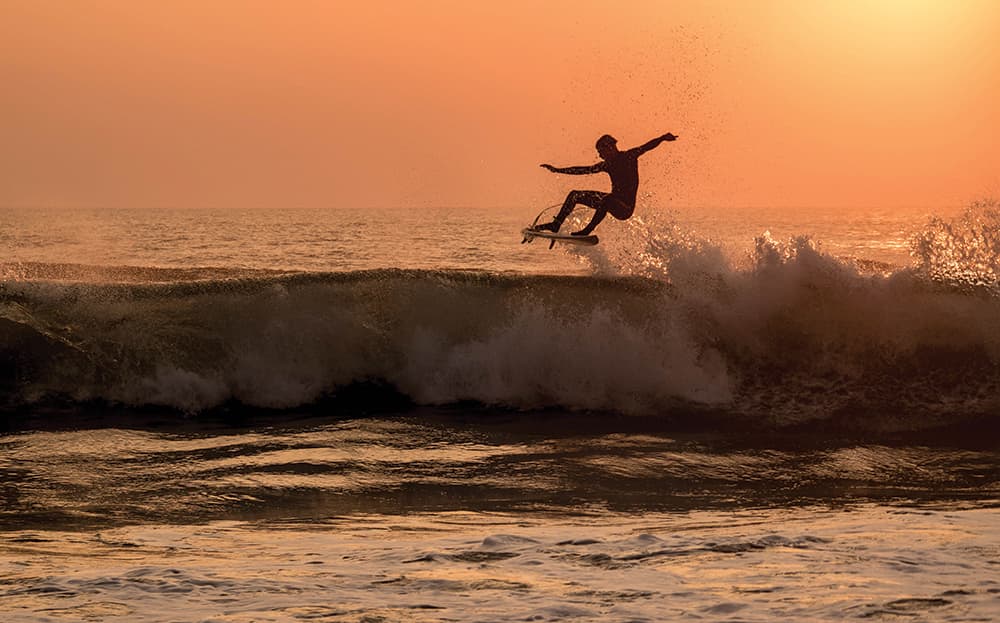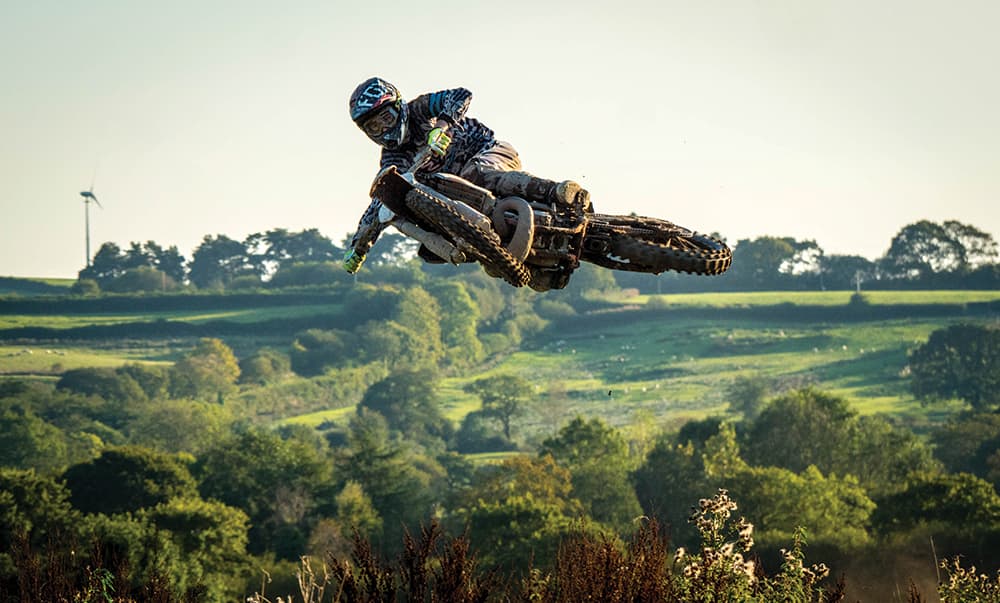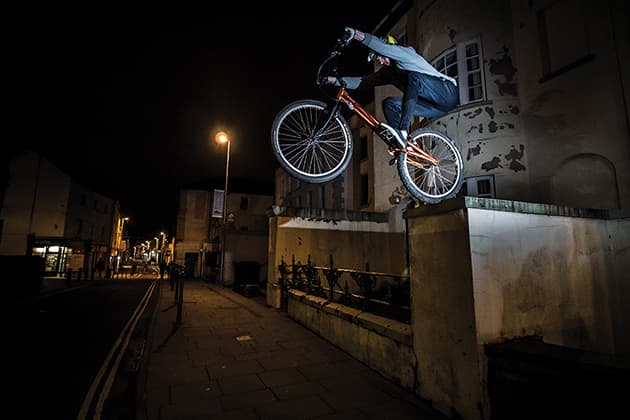I predominantly shoot action— sports like surfing, swimming or skating. Basically anything that’s kind of cool and a bit extreme. I work with people in west Wales and have been involved with action sports all my life. I like supporting the people I know, and I think that comes across in the work that I produce.
This kind of subject matter means that, in terms of the kit I use, the thing I need above anything else is a decent frame rate. I use the Panasonic GH4, the G7 and the GX8, with the GH4 being my main camera, and all these cameras have not only fast frame rates for shooting stills but also the 4K Photo Modes that have recently been appearing in every major Panasonic camera release.
These modes allow users to extract 8MP stills from 4K footage, which is shot at 30 fps, enormously expanding the potential for capturing fleeting moments at exactly the right second. I’ll go over how I use these modes in my work.

4K start/stop allows you to keep recording for the action’s duration
4K Burst Modes
In 4K mode you’ve got 4K Pre-Burst, 4K Burst and Start/Stop.
4K Burst mode: This one’s simple. Put your finger on the shutter release and press and hold for the duration of how long you want to shoot for.
Start/stop: This works more like a video camera. Press to start recording, press to stop.
4K Pre-burst: This one is interesting. When Pre-burst is activated, you press the button to start/stop recording like normal. However, the camera will save a second of footage from before you press the button, and another second from after you release it.
I use 4K pre-burst in the action shooting I do, and find it really useful. It’s really good for fast moments with an unpredictable subject such as a skateboarder, when you simply don’t know what they’re going to do next, as it means if you press the button less than a second after an amazing moment happens, you’ve still got it in the bag. A second may not sound like much, but remember that the 4K video is shot at 30fps – so a second before the button and a second after it is a total of 60 frames to play with! It just gives you a bit of leeway either way, which is really handy.
Whichever mode you use to capture the footage, once you’re done, the camera will allow you to look through the frames and select the one that you want to keep.
When to use regular burst
Of course, 4K burst modes won’t be suited to every situation. Remember that the final image produced will only be 8MP, so if you’re going to need to crop in because you’re at a distance from your subject, or you intend to make large prints of your images, then you’re best off using the standard burst mode for the extra resolution.
The other main situation where you may want to avoid 4K burst mode and stick with regular is if you don’t have enough light. Freezing a subject at these high frame rates requires quite a high shutter speed, and if you don’t have enough light you won’t be able to correctly expose. Of course, there are solutions if you want to stick with the 4K mode – you could fire an off-camera flash or use a constant external light source.

The Panasonic G7 shoots stills at a maximum of 8fps
Tracking subjects
When using burst modes – whichever kind – you need to be able to track your subject. For me in my work, this involves getting to know my subjects before I’m shooting. If I’m shooting a surfer, I observe their style of surfing, so if they’re moving across a wave I’ll pay attention to the sections of the wave they hit and how their body moves and reacts, as well as the kind of movements they make before doing something spectacular likea jump. Whatever action you shoot, the same principles apply: pay attention to your subject.
Getting a feel for how your burst mode works takes practice. When I’ve been shooting with a camera all morning, I get to know how fast it shoots and get the rhythm of its burst in my head, meaning I know the exact right moment to press the button in order to have my surfer or skater at the height of his jump during one of my frames. This is something you’ve just got to practise.

4K pre-burst is useful if your subject does something unexpected
Picking the right camera
Gear-wise you’ve got a lot of flexibility. You could get away with using some of the new compacts such as the TZ100 – I’ve been shooting with it recently and can say it’s a fabulous little camera. It’s got 4K burst modes, and is great to give yourself a taster for 4K.
For the optimal action shooting set-up, though, I’d be leaning more towards something like a G7, which is available for really quite an affordable price at the moment and gives you the option of getting more lenses with it, allowing your kit to develop with you.
If you’ve got the money and you want to take things further then there’s the GH4, but don’t discount the GX8, which has excellent resolution and to me seems to be a little better in low light than both the GH4 and the G7. Try them if you can, to find what works for you.
I get all my kit at Carmarthen Cameras, my local camera shop. I really believe in supporting local retailers and the guys there have bent over backwards to accommodate me over the years.

If you’re at a distance from the action, use regular burst and crop in
Steven’s kit list
In order to capture sports and action as effectively as possible, Steven has built up a collection of kit that’s suitable for his every need. Here’s what he uses:

CAMERA Panasonic GH4.
LENSES Kowa 12mm f/1.8, Kowa 25mm f/1.8, Kowa 8.5mm f/2.8, Kowa 500mm, Panasonic 14-140mm, Panasonic 7-14mm, Panasonic 100-300mm.
‘I use the Kowa lenses as the optical quality is awesome. They also have a manual aperture ring, which has the option of no clicks between the stops – great for filming, too. I really like using manual lenses, you really have to concentrate on getting your focus right and I’m into it. Panasonic lenses – the 7-14mm is a great bit of kit, I find this lens particularly good for action and sports as it’s really wide. The 14-140mm is my “run and gun” lens for when I’m filming motorsports. It gives me a good focus range and has me pretty much covered for anything. I use the 100-300mm for my surfing stuff, but I’ve also used it for motorcross and had some good results.’
TRIPOD Benro C2573FS4 Video Tripod Kit.
‘I used to carry around a really heavy film tripod, which was a nightmare. It was really sturdy, but when I was out filming surfing it was always a chore carrying it around everywhere with me. The Benro kit is super-light, good value for money and the build quality is fantastic. I’ve given the Benro a beating since I’ve had it and haven’t managed to break it yet. Which is good – shooting action can mean you break a lot of stuff.’
FLASH Nissin i40 with Hahnel Captur system triggers.
‘The Nissin i40 is a great flash – probably the best bang for your buck out there. I mostly shoot it off-camera at skateparks and out and about shooting athletes in the street. I team it up with the Hahnel Captur system because they just work – they’re a good no-hassle product. I’ve tried some other flash triggers out there and they were not only a nightmare to use but they also killed batteries.’







